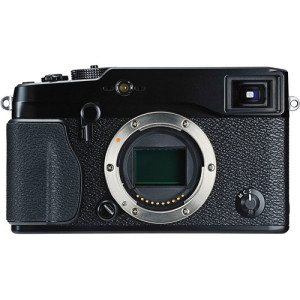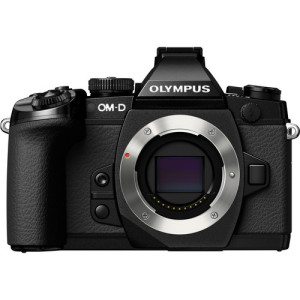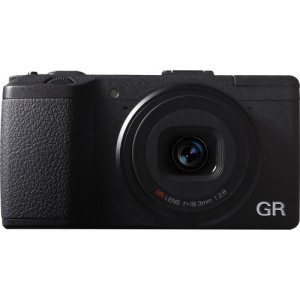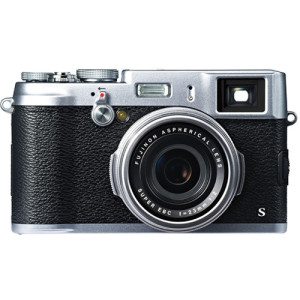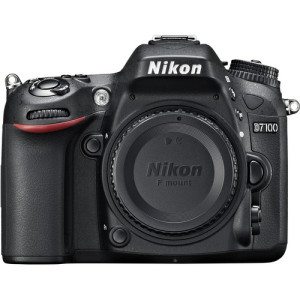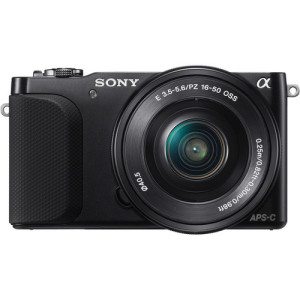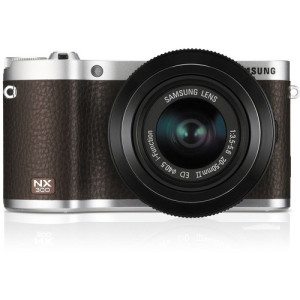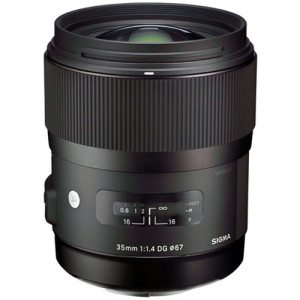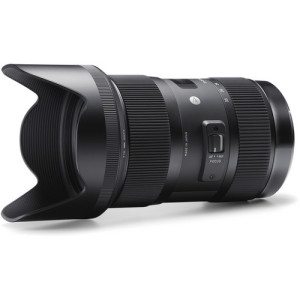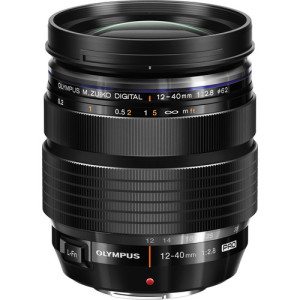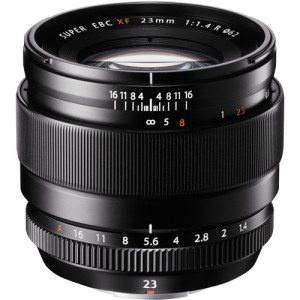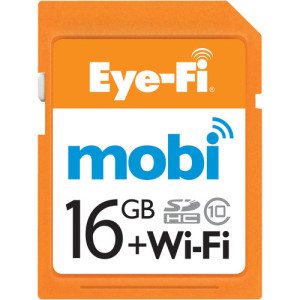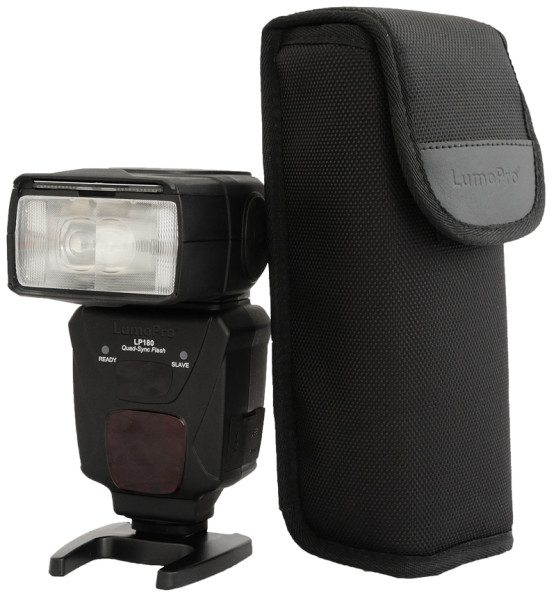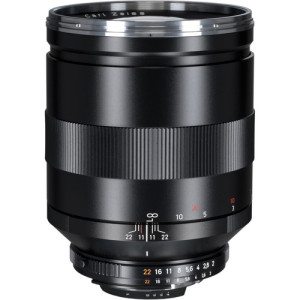Last Updated on 12/02/2013 by Chris Gampat
2013 is nearly over and we’ve seen a slew of new products this year. Some may even say that this year is the one that the Photo Industry came back to full swing since the earthquakes and tsunamis in Japan. And for that, I think that we all have something to be thankful for. What it means in the end for the consumer is that we end up getting better products due to stronger competition.
And this year, much of what the big two have offered did not make our compilation of Editor’s Choice Award products.
Best Mirrorless Camera: Fujifilm X Pro 1
Really? Yes, really.
The Fujifilm X Pro 1 is about to turn two years old, but it has won our Editor’s Choice award for the best mirrorless camera that you can currently buy for a couple of good reasons. First off, there are the ergonomics that make it really pleasant to hold and use for the street photographer and the discerning shooter. If you’ve been shooting for years, holding it will elicit nostalgia like no one’s business.
But beyond this, Fujifilm has shown their excellent commitment to their camera system and their customers. The X Pro 1 and the X series lenses have enjoyed loads of firmware updates to improve the functionality. From autofocus performance tweaks, to focus peaking, to slight changes to the interface: no one has really shown this much commitment to their products since Canon offered loads of updates to the 5D Mk II.
In the mirrorless camera world, commitment to customer satisfaction is what really matters when a system is still blooming. And for that reason, we don’t believe that anyone can argue that this camera deserves the highest praises.
Buy Now: Amazon | B&H Photo | Adorama
Best Rugged Mirrorless Camera: Olympus OMD EM1
And now for something a bit more updated…
While Sony has given us two full frame mirrorless cameras, the Olympus OMD EM1 is the one that has really wowed us considering the aggressive approach taken to it. This camera is the update to Olympus’s very well aged E5 DSLR as well as the flagship mirrorless camera for Olympus.
The camera works incredibly well with old Four Thirds glass and Micro Four Thirds glass. It focuses quickly, and has focus peaking, a functional time lapse mode, WiFi connectivity, a beautiful viewfinder, excellent ergonomics, weather sealing, and a sensor that is more than good enough for most needs and uses. Indeed, we’ve put it through its paces and there is absolutely nothing more that someone would need. Anything extra is just a nice touch.
In fact, it was tough for us to send this review unit back.
For these reasons and more, we consider the OMD EM1 to be the best rugged mirrorless camera that you can get your hands on. And when you hold it, you might not want to let it go.
Read the review.
Buy Now: Amazon | B&H Photo | Adorama
Best Compact Point and Shoot: Ricoh GR
What happens when you take a classic film point and shoot with a cult following and update it for the digital world in a way that would make it a modern classic? You get the Ricoh GR.
The GR is a digital update to the older film point and shoots (as we stated) and the small sensor cameras. But now, Ricoh decided to shove a giant APS-C sensor into the body and give it a fixed prime lens. And as a result, they’ve designed the best compact camera that we’ve seen in a while. And despite the fact that Sony has put a full frame sensor into a compact camera with the RX1 and RX1R, it still doesn’t have the classic feel and look that Ricoh’s GR has or the more affordable price that the GR boasts.
For many shooters, this may truly be your everyday camera. Not only is is semi-pocketable and sport killer image quality, but it also has a very low profile body.
Additionally, it’s a serious underdog. Typically the likes of Canon and Panasonic have dominated the point and shoot arena. But this year, it’s going to Ricoh.
Read the review.
Buy Now: Amazon | B&H Photo | Adorama
Best Point and Shoot: Fujifilm X100s
Though the Ricoh GR is also a point and shoot, it is significantly more portable than the X100s. For what it’s worth though, many professionals can use the X100s with little to no issues as their main camera. With a beautiful 16MP APS-C X Trans sensor at the heart with a 35mm f2 equivalent lens, this camera can do so much.
Photographers from the film days will remember the venerable Hexar AF camera that gives lots of its cues to the X100s. In fact, the camera has a lot of other more retro touches such as a digital simulated split prism focusing option. But then there are all the modern additions such as focus peaking,
For the pro, you’ll get things like a leaf shutter (which Zack Arias has used quite well) dials and controls exactly where you need them, fairly solid build quality, the option of an optical or digital viewfinder, a quiet shutter, and pretty good focusing (though it tends to lag a bit in low light.)
For all these reasons and more, the X100s ranks amongst one of the best point and shoots that you can spring for.
Read the review.
Buy Now: Amazon | B&H Photo | Adorama
Best APS-C DSLR: Nikon D7100
Of course, what would this list be without a DSLR of some sort?
Sadly, the only really amazing DSLR that we saw this year is the Nikon D7100. The company states that this is their new APS-C flagship and replaces both the D7000 and the D300s. And indeed, the company has done a hell of a job.
So what do you get in the D7100? Class leading (and we’d actually say industry leading) autofocus algorithms that balance accuracy, speed and intelligence is just one of the goodies that this camera offers. Tack onto that some incredible image quality, extremely versatile raw files, ergonomics that will leave you dreaming, weather sealing, a timelapse mode, HD video, and so much more.
It’s more of a camera than most folks will ever need–and if you’re the Dad that loves to shoot his kid’s basketball game, you might want to consider this.
Read the review.
Buy Now: Amazon | B&H Photo | Adorama
Best Entry Level Mirrorless Camera: Sony NEX 3N
The Sony NEX 3N answers a critical question for many folks that want to get into mirrorless camera or interchangeable lens cameras to begin with: how do you give them the perfect transition?
More so than any other company out there, Sony got it right.
So what did Sony do? Something quite obvious: they put a zoom lever around the on/off switch to simulate a point and shoot experience. Then when you combine the fact that you can shoot in Auto all day and night and not care a single bit, you’ve got a camera for the person that wants to step up.
On top of this, there is an APS-C sensor inside with image quality that is more than good enough, a small form factor, a selfie mode, and lots more.
And for all of this, we think that the Sony NEX 3N is the camera that you need to get for the person that wants to step up.
Read the review.
Buy Now: Amazon | B&H Photo | Adorama
Best Mid Level Mirrorless Camera: Samsung NX300
Though Samsung’s name isn’t as strong for cameras in the US as it is in other parts of the world, this year the company came out with one heck of a killer camera.
The NX300 houses a 20MP APS-C sensor that, while not as good as its competitors from Sony and Fujifilm, is still quite good with respect to shadow details. But then there are the beautiful ergonomics and lots of great lenses that Samsung offers to their customers.
More so than anything else though is the high emphasis on shooting and sharing. By connecting the camera to your phone via the according app, your camera can use its built in router to transmit images to your phone in real time as it shoots. Then you can just share them from your phone to your favorite sharing network.
Best of all, if you shoot RAW, the camera will convert the images to JPEG upon transfer to your phone: so you can keep your RAW files for editing later on.
If you haven’t taken a serious look at the Samsung system yet, we recommend that you do.
Read the review.
Buy Now: Amazon | B&H Photo | Adorama
Best Mobile Photography App: Hipstamatic Oggl
It’s not Instagram: and for many of us we’re quite thankful of that. Though the world’s largest sharing service has a ton of great perks and you can even make a decent living off of it, there is still the app that is cool before it is really cool.
For the mobile photography world, we feel the Oggl is the true platform for the creative. There are lots of amazing photos taken by people on the network and it doesn’t feel like brands are sitting there shoving their products in your face or someone is trying to show you photos of the pizza slices they had last night.
Instead, Oggl is the single best place for inspiration in the mobile arena. And if you’re a Windows Phone or iOS user, we recommend that you sign up while the platform is still cool but not so cool that everyone and their mom and their marketing team signs on.
Read the review.
Best DSLR Wide Angle Prime: Sigma 35mm f1.4 DG
More so than any other lens, the Sigma 35mm f1.4 is perhaps the optic that kept me from selling all my Canon gear and going fully mirrorless this year. This lens is really, really that good.
Sigma’s 35mm f1.4 is sharp wide open, contrasty, has beautiful bokeh, and believe it or not, has shot more photos on this site than you really realize. Lots of our product images were shot using this lens for its pure versatility, close focusing abilities, and low distortion.
Though Canon’s L lens has slightly smoother bokeh, many folks will realize that bokeh isn’t everything in the creation of an image. It also has to do with build quality, price, focusing performance, and the overall experience. Every time I mount this lens to my 5D Mk II, I’m blown away.
If you’re a DSLR owner, then this is the single lens that we recommend that you pick up as you’ll appreciate the versatility, image quality, build, and everything else about. It may never come off your camera.
Read the review.
Buy Now: Amazon | B&H Photo | Adorama
Best DSLR APS-C Zoom Lens: Sigma 18-35mm f1.8
With the world’s fastest aperture zoom lens with autofocus, Sigma once again takes the lead for lenses this year. When the company announced their 18-35mm f1.8 for APS-C DSLRs, everyone in the industry was shocked. Previously, the fastest aperture zoom lenses were the Olympus F2 zooms for the Four Thirds line. But now, Sigma takes the cake.
Early reports stated that the lens was soft, but when we got our copy in, we barely had a complaint. Our copy was sharp and contrasty, and exhibited excellent bokeh, a wonderful build quality, and speedy focusing. Though it isn’t weather sealed, we took it out during a rain day and it survived with no issues at all.
If you’re okay with APS-C sensor performance, then this lens will be the one for you to go for if you want to start to go pro. And if you’re a Nikon D7100 owner, the combo is a very tough duo to beat when it comes to image quality and pure performance.
Read the review.
Buy Now: Amazon | B&H Photo | Adorama
Best Mirrorless Camera Zoom Lens: Olympus 12-40mm f2.8
We’ve tested lots of Micro Four Thirds lenses here on the site, and many of them really impress us. But when the 12-40mm f2.8 from Olympus came out, we were completely thrown off.
Why? Sharpness, autofocusing speed, build quality and bokeh. Did we mention sharpness? With the Four Thirds and Micro Four Thirds system, f2.8 usually translates into the equivalent field of view of f5.6 on a full frame camera. And with that said, we see almost no reason to stop it down. If you’re a studio shooter, we recommend that you adjust your lights to the performance of this lens.
In fact, this is the sharpest zoom lens that we’ve ever tested. Here at the Phoblographer, we tend to give preference to primes due to the fact that they have so many less problems to deal with when it comes to calibrations and more. However, Olympus’s 12-40mm f2.8 lens is a rock star in our eyes.
And if you’re a Micro Four Thirds user, it will surely be the one optic that you’ll envy.
Read the review.
Buy Now: Amazon | B&H Photo | Adorama
Best Mirrorless Camera Prime Lens: Fujifilm 23mm f1.4
In retrospect, Fujifilm absolutely killed it this year. And when they announced their 23mm f1.4 lens, we were super thrilled. Offering the equivalent field of view of a 35mm lens on a full frame camera, this lens really makes the system shine when combined with a key couple of other lenses for the system including the 35mm f1.4, and the Zeiss 12mm f2.8 Touit.
The 23mm f1.4 boasts excellent build quality despite not having weather sealing, image quality that could be better wide open but is still excellent when stopped down slightly, a snap-back manual focus ring that works great for street photography, and fairly fast focusing. But when combined with Fujifilm’s higher end cameras, it becomes the perfect lens for street photography. From the start, many thought that Fujifilm’s system was designed for street work despite many others using it for more than just that.
However, you’ll need to justify the expensive price to yourself when considering the purchase.
Read the review.
Buy Now: Amazon | B&H Photo | Adorama
Best Accessory: Eye-Fi Mobi Card
So how do you give your older camera mobile connectivity and not make the process extremely complicated? After years of trying, Eye-fi got it right.
With the introduction of the company’s new Mobi card, one just needs to do a two step process and then they can start uploading JPEGs from their camera to their phone with ease. So what does that mean? Your old Canon DSLR can now became the camera that you use for Instagram.
We tested the card with lots of cameras and found the performance to be best with cameras where the card isn’t inserted sideways and that don’t have lots of metal. Still though, the performance isn’t terrible at all as the built in router can still transfer images to your phone or tablet with an astonishing speed.
If you want to get more into the connected camera world without spending another couple hundred on a new camera, this would be the best option.
Read the review.
Buy Now: Amazon | B&H Photo | Adorama
Best Flash: LumoPro LP-180
Best. Damned. Strobist flash. Ever.
EVER!!
No, seriously; not much comes into our hands that literally make all of us say, “Wow.” But this flash is one of those things.
The LumoPro LP-180 is an update to the company’s 160 flash that features an all manual control for strobists. It boasts design updates like a 1/4 20 slot for light stands on the side, a sound port for radios, and the best build quality for a flash that we’ve seen. Ours survived a rainstorm with its ports open: how many flashes can do that? Seriously?
Granted, it is fully manual–so unless you’re ready to take on the world of true manual lighting, you might want to stick with a TTL option. Otherwise, this is going to be one of the toughest flashes to beat.
Read the review.
Buy Now: Amazon
Best Telephoto Portrait Lens for a DSLR: Zeiss 135mm f2
Love. That’s the only word that we can really think about when the idea of talking about the Zeiss 135mm f2 comes up. It’s beautiful in every single way.
Zeiss’s 135mm f2 exhibits gorgeous bokeh, the sharpest wide open performance that we’ve seen from a prime (minus their Otus lens) and an excellent build quality. For the best performance though, we recommend using it with a monopod or tripod as manually turning the focusing ring will throw off the AF confirmation a bit.
Now, it isn’t a lens for everyone. But if you can afford it and are serious about getting into the headshot business, then you’d be stupid to not look at this lens.
Read the review.
Buy Now: Amazon | B&H Photo | Adorama
Please Support The Phoblographer
We love to bring you guys the latest and greatest news and gear related stuff. However, we can’t keep doing that unless we have your continued support. If you would like to purchase any of the items mentioned, please do so by clicking our links first and then purchasing the items as we then get a small portion of the sale to help run the website.
Also, please follow us on Facebook, Google+ ,Flickr and Twitter.



